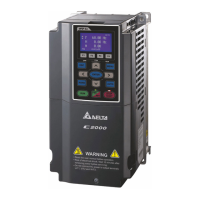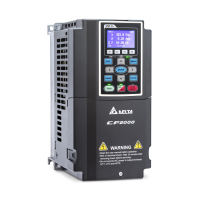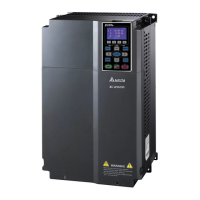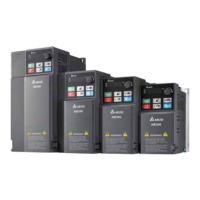Chapter 15 CANopen Overview C2000 Plus
15-5
SDO (Service Data Objects)
Use SDO to access the Object Dictionary in every CANopen node using the Client/Server model. One
SDO has two COB-IDs (request SDO and response SDO) to upload or download data between two nodes.
There is no data limit for SDOs to transfer data, but it must transfer data by segment when the data exceeds
four bytes with an end signal in the last segment.
The Object Dictionary (OD) is a group of objects in a CANopen node. Every node has an OD in the
system, and OD contains all parameters describing the device and its network behavior. The access path
in the OD is the index and sub-index; each object has a unique index in the OD, and has a sub-index if
necessary.
PDO (Process Data Objects)
PDO communication can be described by the producer/ consumer model. Each node of the network
listens to the messages of the transmission node and distinguishes whether the message has to be
processed or not after receiving the message. A PDO can be transmitted from one device to one another
device or to many other devices. Every PDO has two PDO services: a TxPDO and an RxPDO. PDOs are
transmitted in a non-confirmed mode. All transmission types are listed in the following table:
Type Number
PDO
Cyclic Acyclic Synchronous Asynchronous RTR only
0
○ ○
1–240
○ ○
241–251 Reserved
252
○ ○
253
○ ○
254
○
255
○
Type number 0 indicates the synchronous aperiodic message between two PDO transmissions.
Type number 1–240 indicates the number of SYNC message between two PDO transmissions.
Type number 252 indicates the data is updated (but not sent) immediately after receiving SYNC.
Type number 253 indicates the data is updated immediately after receiving RTR.
Type number 254: Delta CANopen does not support this transmission format.
Type number 255 indicates the data is an asynchronous aperiodic transmission.
All PDO transmission data must be mapped to index via Object Dictionary.
EMCY (Emergency Object)
When errors occur inside the hardware, an emergency object is triggered. An emergency object is
only sent when an error occurs. As long as there is nothing wrong with the hardware, there is no emergency
object warning of an error message.

